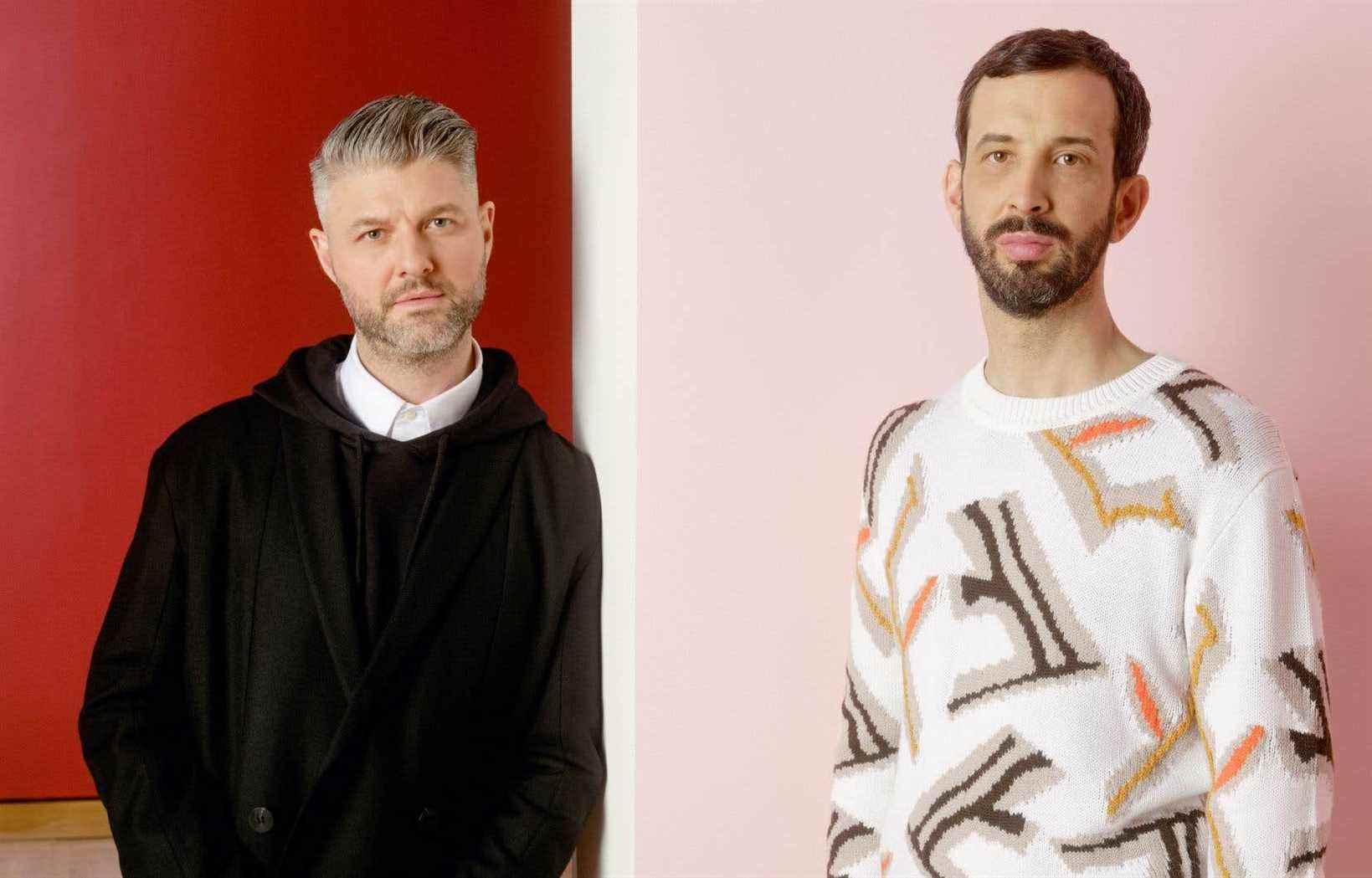For the first time in Canada, we are devoting a solo exhibition to the work of internationally renowned Swiss artist Nicolas Party. Echoing his modern and timeless universe presented at the Montreal Museum of Fine Arts (MMFA), Pierre Lapointe, a great visual arts enthusiast, is launching a new album which is also part of the exhibition and which borrows his title : purple hour. It’s time to step outside and enter a world of vibrantly colored portraits, lavish murals and surreal landscapes.
This fruitful association between the prince of pastels and the little king of song originated with a flash from the director general of the MMFA, Stéphane Aquin. “For the texts that would accompany the works, we wanted something poetic, explains Nicolas Party, joined in New York by interposed screens. Stéphane suggested that we approach Pierre. He agreed and offered to write songs that would cater to venues. »
The singer-songwriter, who did not know the artist personally, but who followed his work on social networks, understands why we thought of him: “We find, in the universe of Nicolas and mine, a very postmodern referential dimension. It’s accessible and edible, but if you dig a little deeper, you can see other more complex layers of reading. »
There is something very eye-catching in the world of Nicolas Party, whose star has been shining brightly for ten years in the world of visual arts. Last November, Landscape, a pastel on linen by the man nicknamed the “BuzzySwiss Artist” was sold for US$3.2 million at a sale at Christie’s in New York. Arriving at the top of the stairs of the MMFA’s Hornstein pavilion, visitors will find themselves in front of a huge mural, a soft landscape, all in curves, superimposition of indigo, white, anthracite and mauve mountains set against a candy peach sky background . A feast of dazzling colors that shatters the pandemic gloom.
From one room to another, this heir to Magritte and Picasso, artist, curator and director all at once, brings his works into dialogue with those he has chosen from the MMFA’s permanent collection. We come across paintings by the Group of Seven, Emily Carr, Otto Dix and Ozias Leduc, a great discovery for him. purple hour, title of the exhibition, is the title of a painting by Leduc that we rediscover through his gaze. Wonderful curatorial work.
Nicolas Party: “I’ve always thought that art was one of the only vehicles created by humans that allows us to travel through time without any barriers. It’s like the DeLorean in Back to the Future : through art, one can really connect with the humans of the past. »
Enter the landscape
In turn, Pierre Lapointe was inspired by the themes of the canvases chosen and created by his collaborator to revisit a selection of classic songs, both Quebecois and international, intertwining his own compositions. We navigate between Gilles Vigneault, Kurt Weill, Claude Léveillée, Léo Ferré.
Pierre Lapointe answers the‘Hymn to Spring by Félix Leclerc by a Hymn to the fall. After a resumption of No I did not forget anything d’Aznavour, he connects an original composition which is the narration of a vivid memory. Further, it replies to the famous and silky Gnossian noh 1 by Satie, the surrealist composer, with a lovely instrumental piece signed in tandem with Philippe Brault, director of the album.
Is it dizzying to dialogue like this with great masters, not to say monuments? “I didn’t have the luxury of thinking too much about it, because I came in quite late in the process. I had to go quickly, I was in a hurry. Once the work was done, I wondered if there was something pretentious about the exercise… But it was too late, and that’s just as well! he said with a laugh.
The listener will be invited to plug in their headphones to hear the songs associated with the different rooms. The result is a double object, both a soundtrack to extend the experience by making the exhibition even more immersive and an album by Pierre Lapointe, entitled purple hourlike the exhibition, simmered with its usual collaborators. Sumptuous and timeless bedroom pop, elegantly arranged, pieces at times classic, elsewhere daring. Lapointe dares to leave his usual patterns and let himself be drawn into one of Nicolas Party’s great and beautiful fads: the obsession with landscape.
Exalted, deployed, celebrated, destroyed, in ruins, then reinvented and saturated with tightly pigmented colors, the landscape is one of the great themes in Party’s pictorial work. Here, nature is queen. “When we started to collect the works for the project, I realized quite quickly that Canadian art had a very strong link with the history of the landscape, observes the man who, in his early days, painted graffiti on the European trains. Like Switzerland, my relationship to the territory is different, but very present, with our mountains to “ground” us. I approach the subject from two angles. First, nature is an infinite source of beauty and pleasure; during the pandemic, we all had the reflex to turn to her. On the other hand, we experience growing anxiety, because we begin to be afraid of losing her. »
Pierre Lapointe recalls that in song as in art in general, we were first determined through it: “All the singers – Charlebois, Ferland, Claude Gauthier – began by singing about nature, the cold, winter . I find it moving that, to define ourselves, we fall back on the thing that doesn’t move and that is just there, that is to say the landscape. »
Music and visual arts, two by two together
